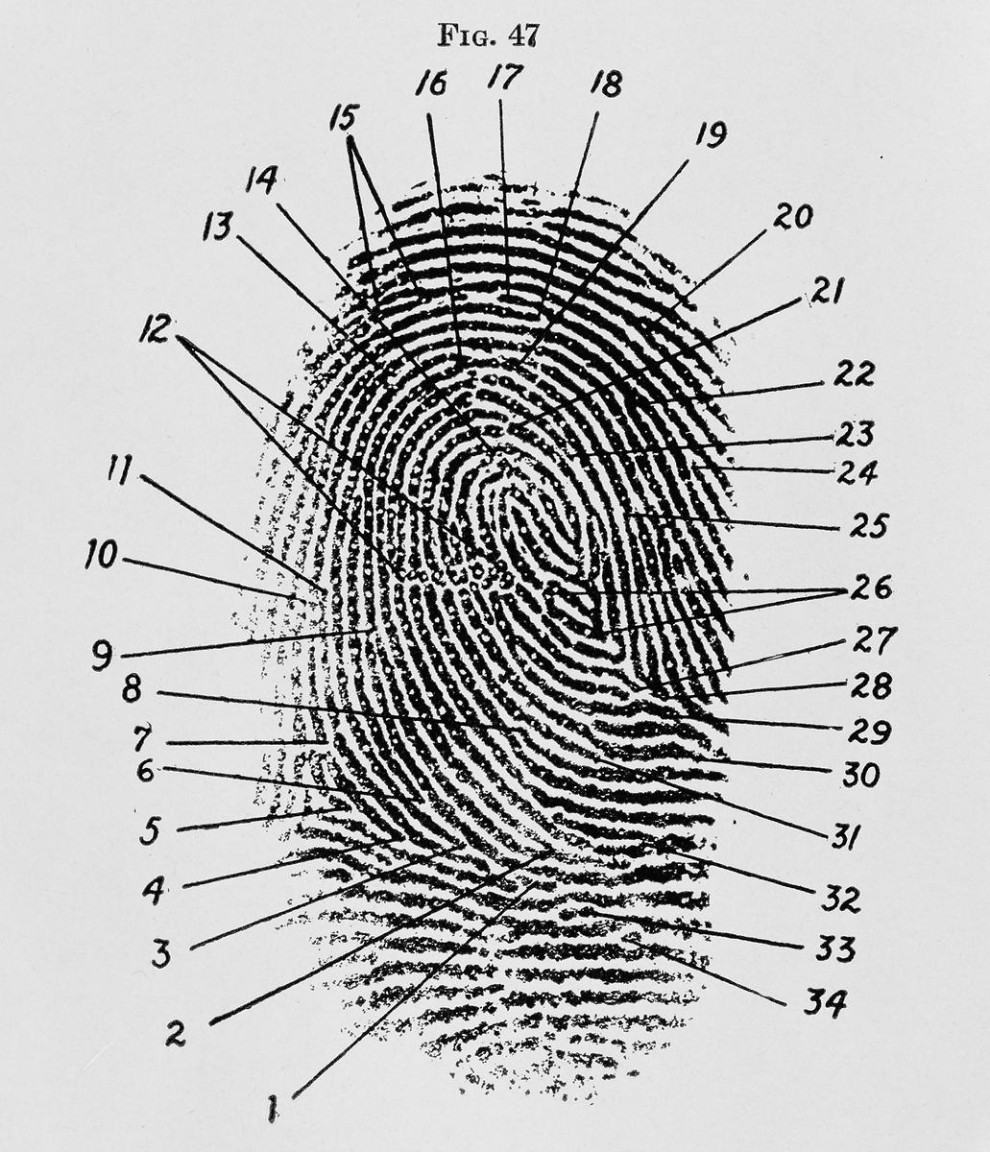For years, the necessity of fingerprint chart preparation has been discussed by those in the field of fingerprint identification. However, with the advent of the ACE-V method of identification, the need to properly prepare and present the identification both for disclosure and for court has in effect put this discussion to rest. Especially since expert opinion evidence is to be offered regarding the identification, it is necessary that the court be able to view the comparison and follow along with any explanation provided. With the need to disclose in advance of the court date any evidence that will be offered, the fingerprint chart is an easy way to assist in a manner that follows the requirements of best evidence. The lack of a chart could well indicate a lack of proper preparation, and certainly a lack of adequate disclosure.
With the Qualitative – Quantitative and ‘ACE-V’ method as taught by David ASHBAUGH and others, every fingerprint ridge is examined and notes are made of the process. Those notes also become part of the disclosure package along with the rest of the Forensic Identification Section report.
There is a need to analyse the fingerprint in detail to determine what weight of credibility can be placed on individual fingerprint characteristics or minutiae located in the various parts of both the scene and known print. What was the contact surface, what was the deposited medium that made up the latent print, what method was used to develop it, how and in what manner was the print placed on the surface, and what has happened to the latent since its placement until it was located, developed, and recorded?
These are all questions that need to be answered. Are there areas of over or under pressure, double tap, smudging, distortion, etc? What levels of detail (level 1, 2.,& 3) are present and in what areas? These are all things that need to be known before an objective comparison can be undertaken, and they affect the overall amount of evidence required to form an opinion of identification – the evaluation.
The process may require modern evidence tracking software and specialized techniques including microscopes, special lighting, special printing (what used to take place in the darkroom with the enlarger but now is carried out on the computer), etc. These processes should all be recorded in the identification report, and anything done to the print on the computer must be recorded and provided for the final verification procedure.
The evaluation must be determined only after the analysis and comparison have been completed and it must be a conclusion that those with similar training and knowledge can also reach based on the same known data. In this country, this evaluation must be verified independently by one’s peers, and is the ‘V’ in the ‘ACE-V’ process.
By examining all the evidence present in the fingerprint, the need to simply ‘count points of comparison’ in order to arrive at a conclusion is eliminated and is no longer a valid means of developing and offering an opinion as to the identification. This holds true not only for fingerprints, but for all types of physical evidence comparisons.

